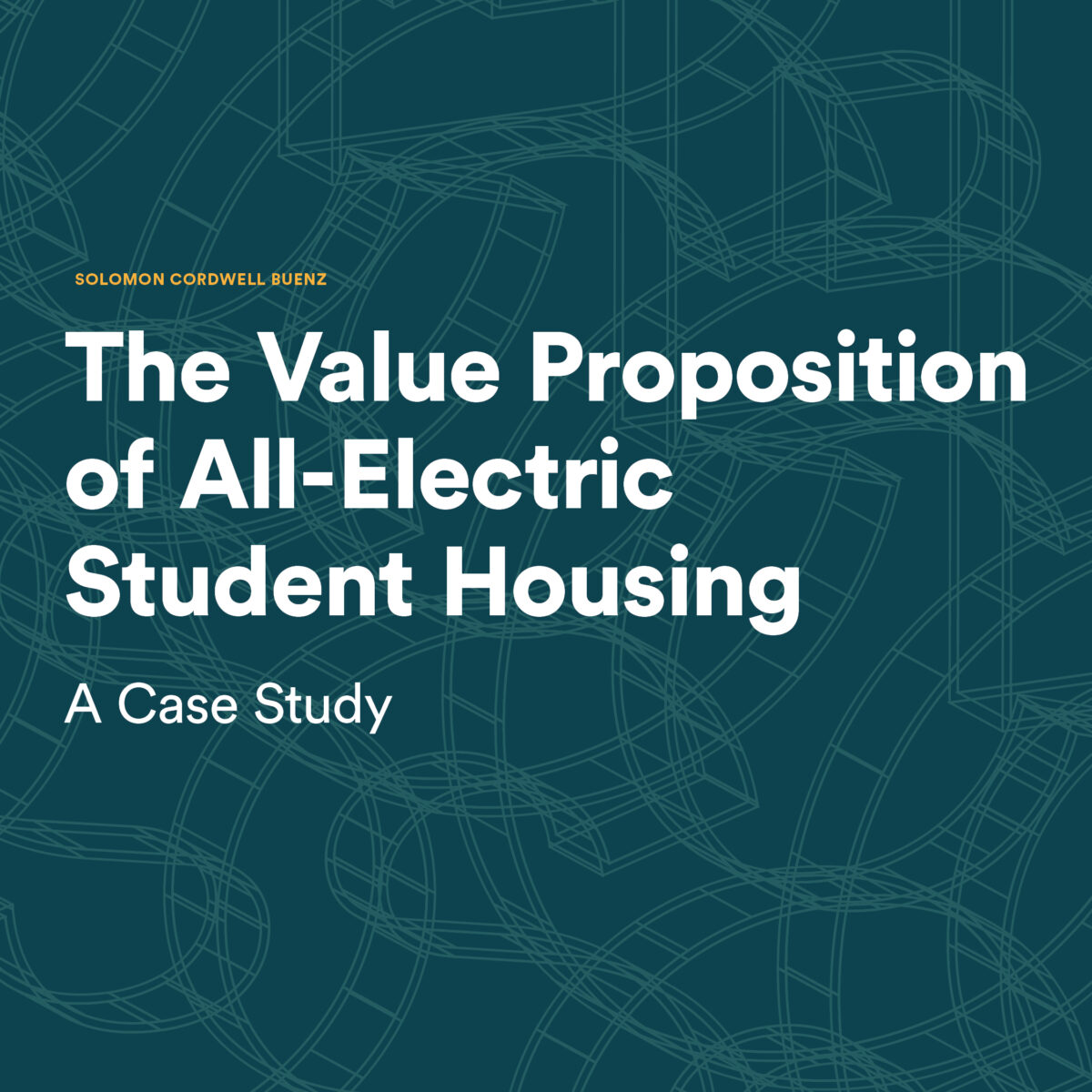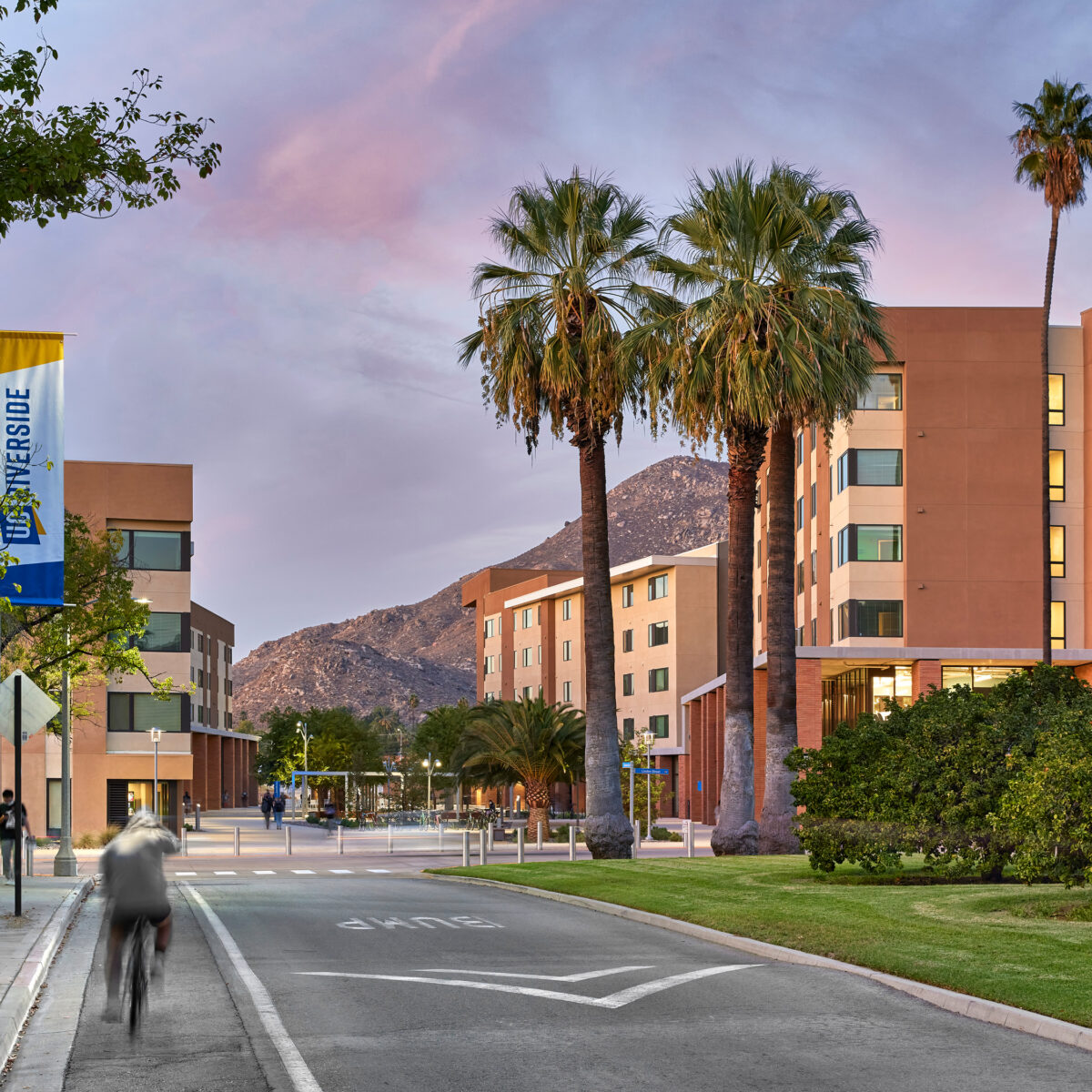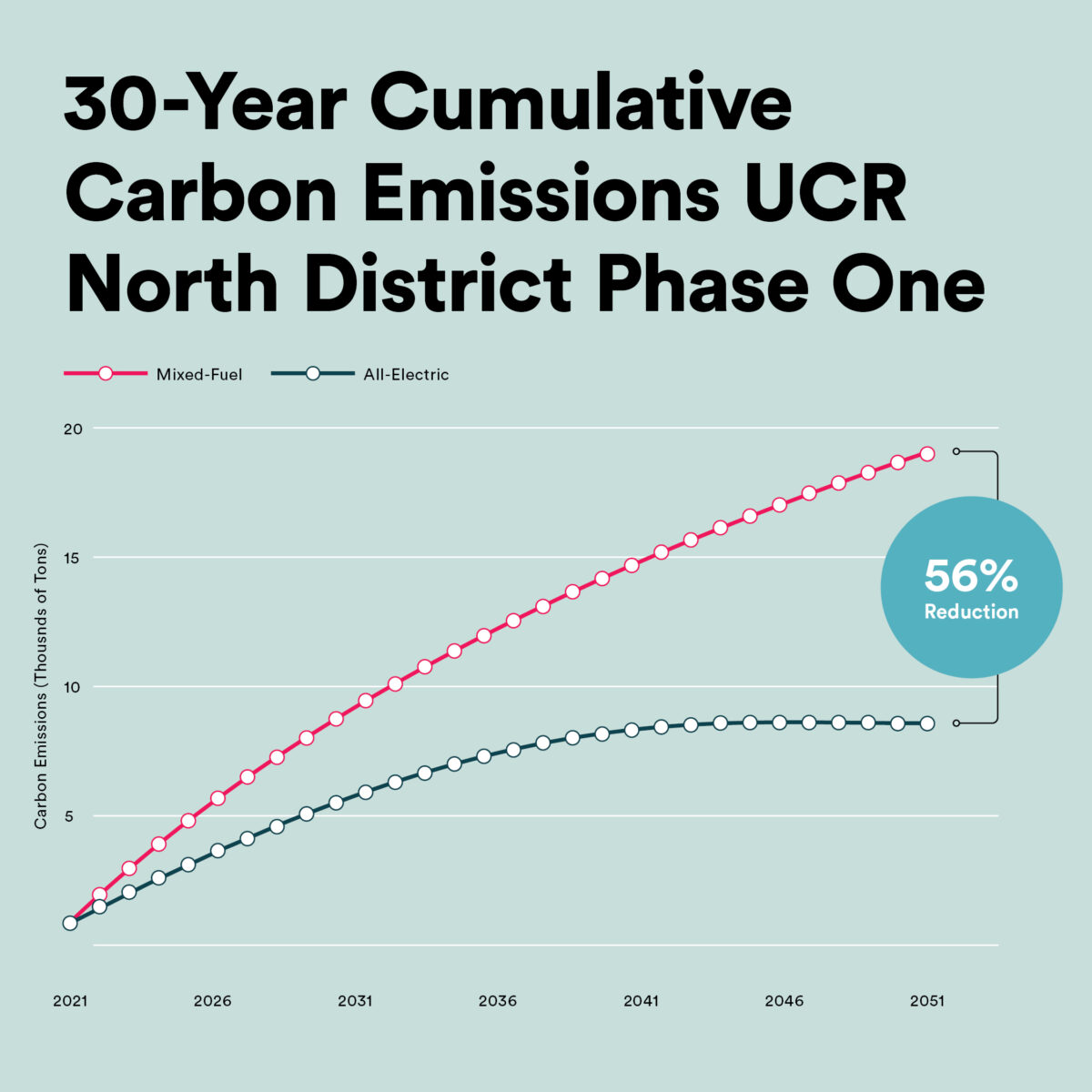Decarbonization. Renewable Energy. Sustainable Design. With buildings consuming 40% of the total energy produced nationally each year, architects and engineers are being challenged to design buildings that not only consume less resources, but also utilize cleaner sources of energy. Using the recently completed Phase One of the North District at the University of California, Riverside (UCR) as a case study, SCB completed a comparative analysis between a traditional mixed-fuel and all-electric powered student community.
Read the full case study: The Value Proposition of All-Electric Student Housing | A Case Study by Solomon Cordwell Buenz – Issuu



The case study utilizes five key criteria to assess the impact of electrification on the project: spatial and structural implications, first costs, life-cycle costs, code challenges, and schedule impacts. The analysis provides valuable information for university administrators, student housing developers, and designers to make informed decisions regarding building electrification as a means to reduce reliance on fossil fuels, save on energy costs, and enhance student health.